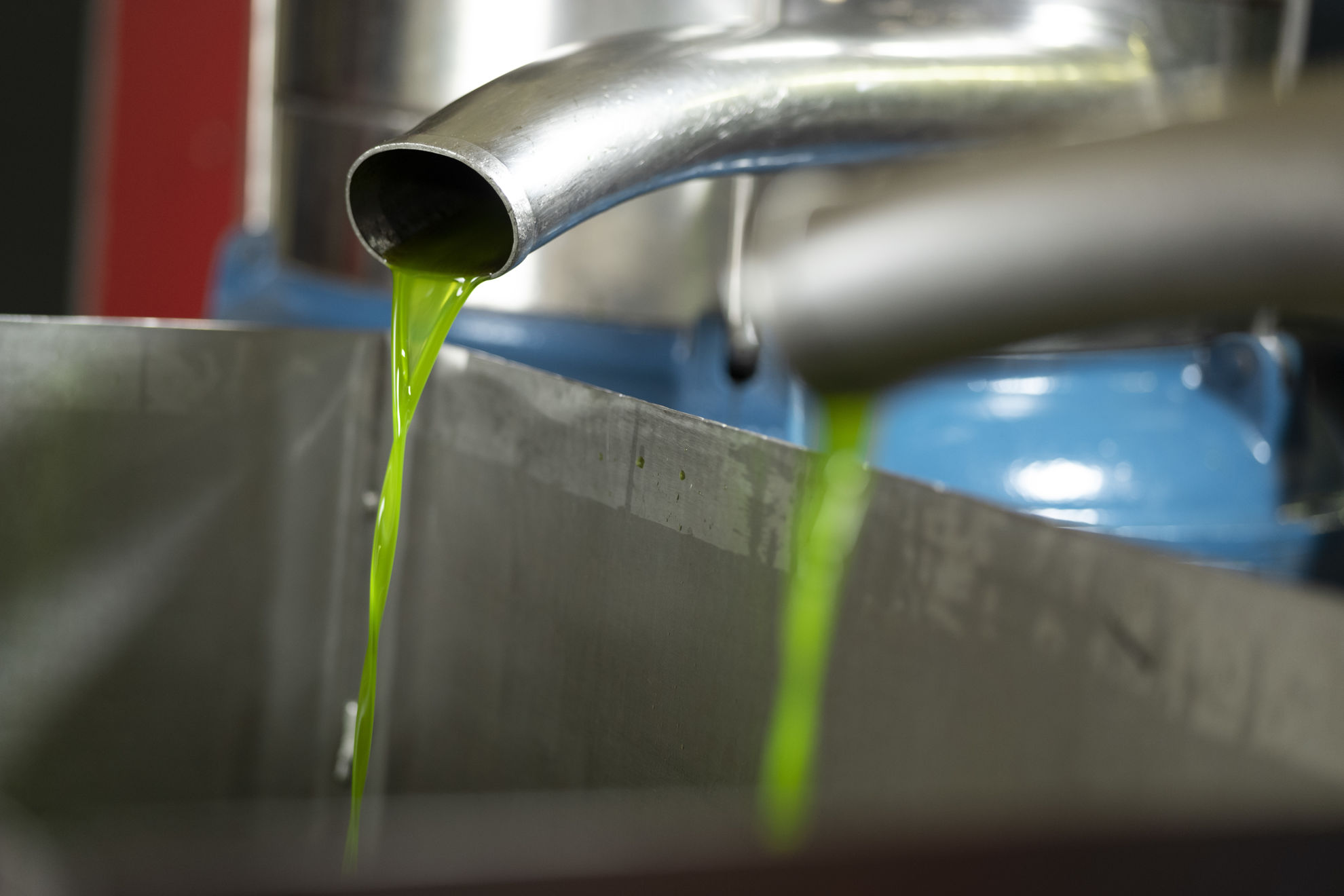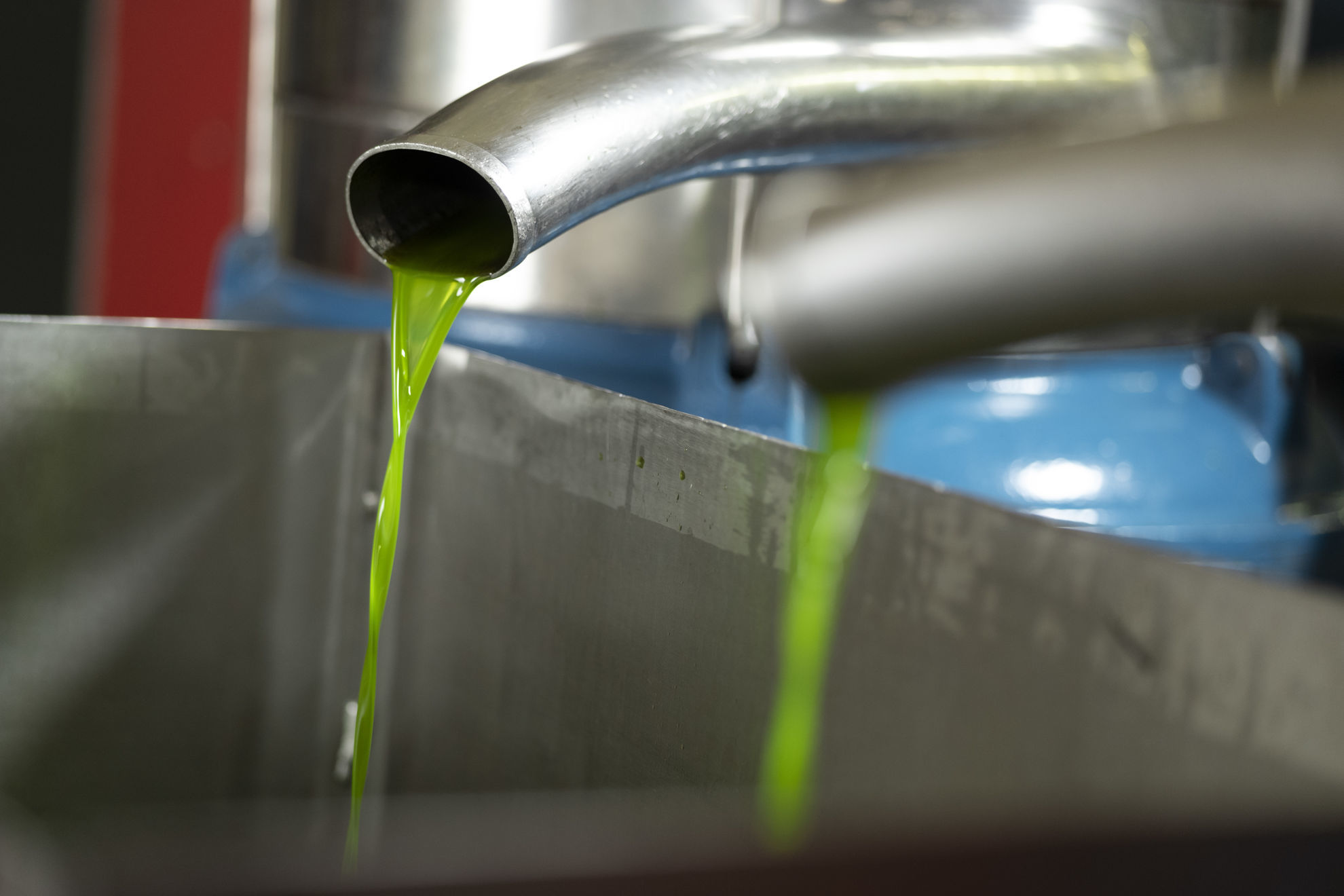
If you look around carefully for a moment, you will immediately notice how colorful nature and all its fruits are. The color of extra virgin olive oil is part of this vast rainbow, but in this case, it is more appropriate to talk about shades and clarity.
Olive oil can indeed have many nuances, which depend on various factors and can be indicative of its quality and freshness. So, what color should quality olive oil be? Let’s discover it together!
The Meaning of Olive Oil Color
Have you ever wondered what determines the color of olive oil? Its shades reflect various factors, such as the region of origin and the olive variety.
Indeed, each cultivar has its characteristics, mainly influenced by the climate of the region where it grows. They change based on the soil, temperature, humidity and precipitation.
All these variables determine the olive variety, modifying its properties and consequently its color and flavor.
In Puglia, we find Coratina, an olive variety with a high quantity of polyphenols, contributing to a very dark green color.
In Liguria, the Taggiasca olive has a straw yellow color. While the Oragliola, a typical olive in Salento, can take on a yellow color with greenish reflections, depending on the harvest time.
In Tuscany, the region that gives birth to our Laudemio Frescobaldi oil, the most used varieties are Frantoio and Moraiolo, but also a small portion of Leccino.
If producers then blend different types of cultivars, the situation becomes even more complex because the oil takes on a consistently different color.
Another crucial factor that determines the olive oil’s hue is undoubtedly the extraction method used, resulting in a true classification of types of olive oil with various varieties, each with its composition and therefore its respective color.
Different Extra Virgin Olive Oil Colors
We have seen how the color of olive oil can depend on numerous factors. Let’s now explore what each shade can indicate in terms of olive ripeness, preservation of nutrients, and versatility in the kitchen.
-
Intense green: the olives were harvested almost unripe, so they have a lot of chlorophyll, or perhaps olive leaves were added. This olive oil will undoubtedly have a stronger, bitter, and spicy aroma, so it should be used judiciously.
-
Golden green: the olives were harvested at incomplete ripeness, and the oil takes on an emerald green color, with carotenoids and chlorophyll in a balanced proportion. This oil has very balanced organoleptic properties.
-
Golden yellow: the olives were harvested at full ripeness, and chlorophyll has now given way to carotenes. Not only does the color become much more delicate, but the flavor also becomes more subtle. Therefore, in the kitchen, it can be used for some complex recipes that need to be lightened.

Unraveling the Correlation between Oil Color and Quality
Perhaps you were waiting for this moment since you started reading, but the truth is that to understand whether olive oil is of good quality or not, color is not the primary determining factor, or at least not the only one!
You can find excellent golden yellow oils, as well as in intense or veiled green. For this reason, the panel test for oil testing and evaluation does not take color into consideration.
Tasters sample the oil in blue containers to avoid being influenced by its hue and potentially losing sight of the aroma and taste. However, experts can still assess its clarity, acidity, and the presence of sediments to understand whether it has been filtered or not. If unfiltered, it appears less transparent compared to a filtered oil, which will undoubtedly appear brighter.
However, there are exceptions and cases where the olive oil’s color serves as an indication of low quality.
-
If it is excessively yellow and of an unnatural, almost artificial hue, it may have been highly refined, losing all its positive characteristics.
-
If the olive oil undergoes oxidation and becomes rancid, we will find it dark or even brown, almost resembling whiskey. This can happen when it is not stored in a proper manner. So, it has not been kept in the dark and in airtight containers, and has been excessively exposed to sunlight, high temperatures, and oxygen.
-
If exposed to excessively low temperatures, white dots may appear. In this case the freezing process has caused triglycerides to crystallize. Once brought back to room temperature, it can be used safely, but of course, it would be better not to subject it to these alterations.
In these aforementioned cases, both the organoleptic and nutritional properties diminish, and the oil not only tastes less good but also loses all the health benefits that high-quality olive oil provides.
Optimal Selections for Different Culinary Preparations
Let’s move from the table to the stove: recipes with olive oil are endless, and you can experiment and play with the most diverse pairings! As we have already mentioned, an intensely green oil pairs well with robust dishes, while a yellow one is perfect for more delicate preparations.
However, combinations are also and above all a matter of personal taste. If you want to be daring, try enhancing a delicately flavored legume soup with a very fruity, bitter, and intense oil.
Alternatively, you could contrast the delicacy of a yellow-colored oil with a more structured and boldly flavored dish. Have you already decided what your next dish will be?
Conclusion
In this article, we have explained how the color of the olive oil can reflect the variety of olives, the region of origin and the extraction method.
Furthermore, its hue can also provide clues about the ripeness of the olives at the time of harvest and the balance in which the nutrients are preserved. However the color alone may not be sufficient to assess whether an oil is of high or low quality.
If you're unsure which product to choose for your next recipe, don't rely only on color. Instead, opt for a balanced and harmonious emerald green oil, with its nutritional and organoleptic properties in place.
Of course, we are talking about Laudemio Frescobaldi extra virgin olive oil. Find out more about it or order it now!